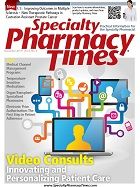
Publication
Article
Specialty Pharmacy Times
Electronic Prior Authorization: The First Step in Patient Adherence
Author(s):
A streamlined prior authorization process can increase administrative efficiency and improve health information security.
A streamlined prior authorization process can increase administrative efficiency and improve health information security.
Patient adherence is a growing concern for everyone currently involved in the health care system. Delaying a patient’s therapy due to additional prior authorization (PA) steps that insurance companies, pharmacy benefit managers (PBMs), or third-party payers frequently require before claim adjudication has led to alarming first-fill issues for patients. The goal of a PA is to improve patient safety and contain costs, but the current process is frequently manual, nonstandard, burdensome, and more costly due to subsequent expenses from lack of therapy adherence.
In specialty pharmacy, the detriment caused by lack of first fill and broken therapies is clear:
• Disease progression
• Additional diagnoses
• Disease relapse
• Hospitalization
• Uncontrolled vitals
• Abnormal laboratory values
• Decrease in therapeutic outcomes
• Death
The patient gets lost in a PA limbo, where medications often require multiple telephone calls and faxes, and waiting between pharmacy, provider, and a third party administrators to receive approvals. Fixing this archaic process is essential to our nation’s formula for improved health care and reduction in annual health care costs.
ELECTRONIC PRIOR AUTHORIZATION
A modern way to improve patient adherence is to focus on the actual process to decrease the administrative time clinicians spend on obtaining approvals—electronic prior authorization (ePA) streamlines this process. E-prescribing also supports efforts to improve the standard of care through electronic mobile devices used to increase administrative efficiency, information safety, and protected health information security. An automated decision tree expedites immediate approval for medication. Some forward-thinking states have already implemented legislation mandating electronic prior authorization in support of the ePA initiative.
{Click image to enlarge}
NCPDP EPA STANDARD
The National Council for Prescription Drug Plans is working with the pharmacy industry stakeholders on formatting a national ePA standard. The use of ePA can provide a “real time” response on medications and a faster turnaround time from the PBM when a review is necessary, and helps to dramatically improve the process.
This ePA standard is a 4-part transaction specific to a particular patient, plan, and drug (Figure). The PBM provides the criteria repository appropriate to the ePA based on the patient formulary and medication. Once a pharmacy receives a PA-related rejection, they can initiate a request.
Step 1 of the 4-part transaction is the submission of the patient and drug information to the insurance plan. Based on plan-dictated logic, a patient or drug-specific question set response is sent for completion (step 2). The questions are to be filled out, then submitted electronically to the plan from either the pharmacy or physician (step 3), and lastly (step 4), the transaction standard is a coverage decision by the plan.
Through an adjudication system, the ePA may result in a real-time coverage decision response where the health plan can approve the prior authorization instantaneously based on the provided information. The use of ePAs results in a significantly faster turnaround time compared with the traditional paper form, and allows patients to start their medication as originally prescribed by the physician.
Advantages of ePAs include:
• Drug-specific questions, so secondary question sets are not needed
• Decreased administration time by up to 4 to 6 hours per week for physicians/staff
• Patient can get the medication they were prescribed faster
• Significant decrease in prescription abandonment
• Increase in patient adherence and successful therapeutic outcomes
Most plans’ existing PA processes are excellent, but there are simply too many plans—each with their own unique processes, web portal, usernames, and passwords—for providers and staff to handle. A streamlined process must be implemented as plans squeeze and cut down formularies.
CoverMyMeds.com is a website that centralizes ePAs for many different plans and PBM web portals. It’s a free service to users that specializes in consolidating all PAs into 1 centralized place, streamlining the PA process. The pharmacists and prescribers can then focus more time and energy on their patient care, provide excellent health care services, and ultimately, get patients on the medications they need, thus improving adherence and preventing prescription abandonment. SPT
About the Author
Julie Hessick, RPh, is responsible for account management of all pharmacy benefit manager (PBM) and plan customers for CoverMyMeds. She oversees development, launch, and ongoing implementations for electronic prior authorization and CMM Central solutions. With more than 15 years working in PBM, specialty, mail order, and infusion services, Julie’s clinical experience helps CoverMyMeds build and maintain highly collaborative, long-term customer relationships. Before joining CoverMyMeds, Julie served as the manager of clinical services and manager of pharmacy operations PBM where she practiced clinical and administrative pharmacy in managed care, home infusion, and specialty settings. She is a registered pharmacist in Ohio, Virginia, and Arkansas.

2 Commerce Drive
Cranbury, NJ 08512
All rights reserved.





